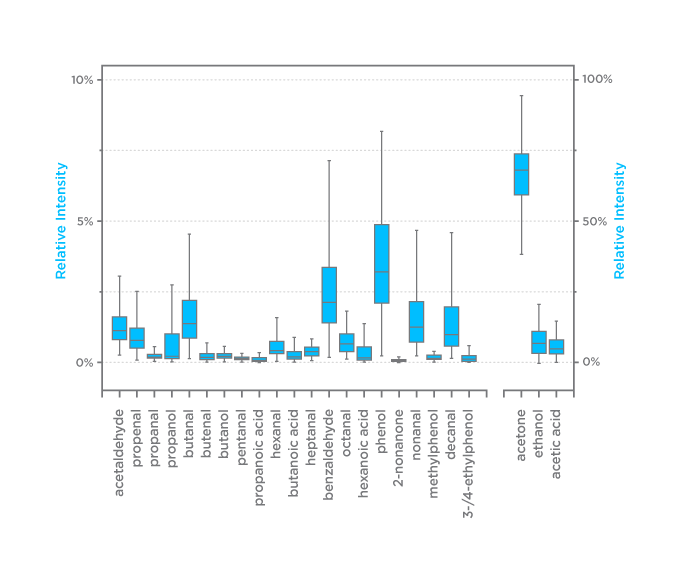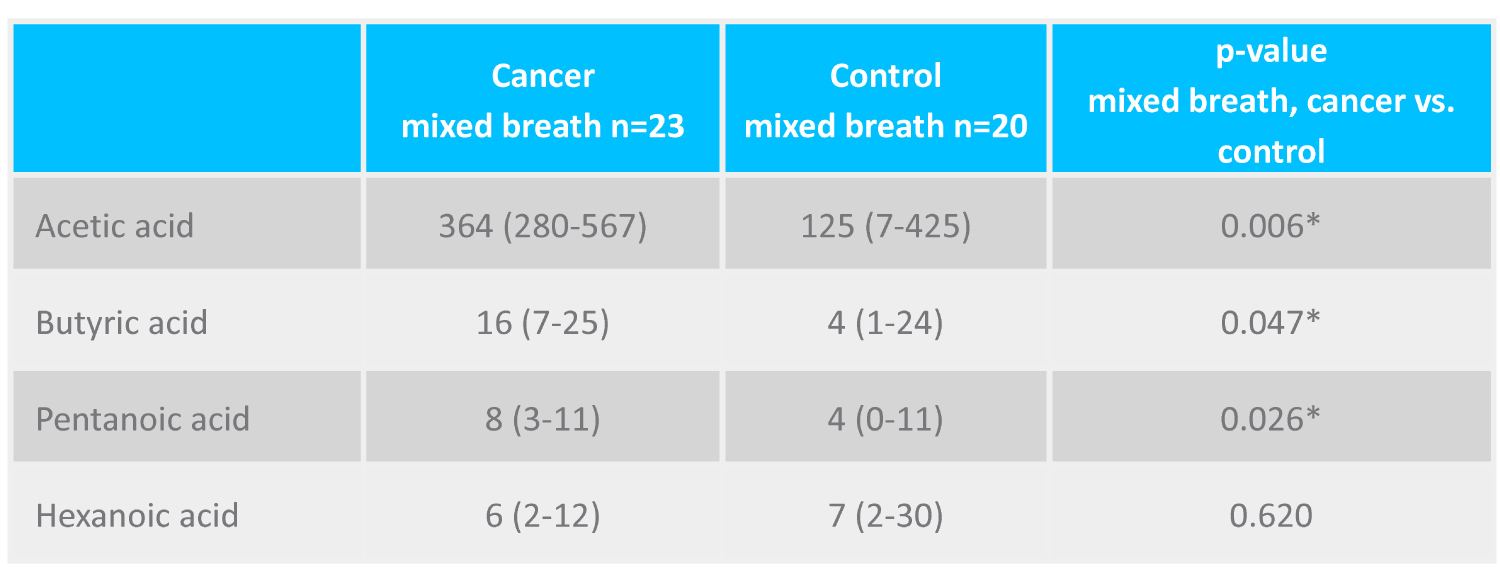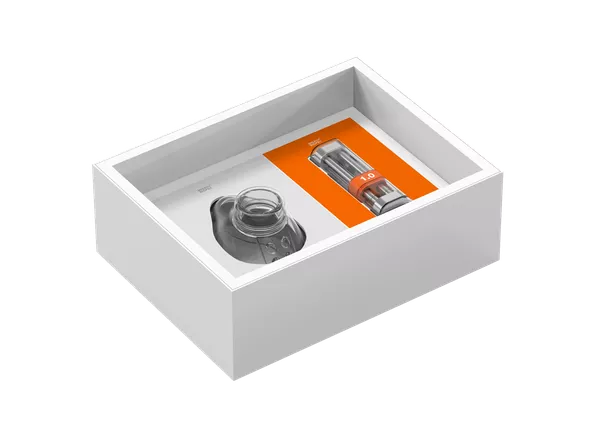SCFAs on breath could help detect esophageal-gastric cancer earlier
Fatty acids show promise as potential non-invasive biomarkers
| Publication information: Adam et al., Mass spectrometry analysis of mixed breath, isolated bronchial breath and gastric endoluminal volatile fatty acids in oesophagogastric cancer, Anal. Chem. 91(5), 3740-3746 (2019). DOI: 10.1021/acs.analchem.9b00148
Disease Area: Esophageal-Gastric Cancer Application: Early detection Sample medium: Breath Products: ReCIVA® Breath Sampler Analysis approach: GC-MS Summary:
|
Esophageal and stomach cancers are amongst the most commonly occurring cancers with 456,000 and 952,000 new cases respectively diagnosed globally in 2012.1 Early stage esophageal-gastric cancer is usually associated with non-specific symptoms. Identifiable symptoms often only occur once the disease is in an advanced state, with reduced prospects of long-term survival. Improving long-term survival by detecting the cancer earlier is challenging as existing detection techniques are invasive and expensive hampering their use on the vast number of patients who present with upper gastrointestinal symptoms of unclear origin.
In an earlier study that set out to investigate the breath composition of esophageal-gastric cancer patients, Sung Tong-Chin et al.2 collected breath using the ReCIVA Breath Sampler. By taking advantage of the ReCIVA Breath Sampler’s ability to collect multiple replicates during a single breath collect, they were able to analyze breath using multiple mass spectrometry approaches, thus collating detailed breath volatile organic compound (VOC) structural data. Figure 1 shows the relative intensity of a number of VOCs, across a population of 21 patients with esophageal-gastric cancer. This study hoped to provide a useful basis for designing and interpreting future studies that aimed for early-stage breath disease biomarkers in cancer in the patient population.

Figure 1. Box and whisker plot of the relative intensity of VOC composition in exhaled breath of esophageal-gastric cancer patients analyzed by Thermal Desorption Gas Chromatography Mass Spectrometry (TD-GC-MS).
In the follow-up study, Adam et al.3, members of the same research group at Imperial College London, focused in on volatile fatty acids (VFAs), also known as short chain fatty acids (SCFAs), a subset of the VOCs that had been identified in Sung Tong-Chin et al.’s paper. SCFAs are produced in the gut microbiome by bacteria as part of normal fermentation of carbohydrates (with the most common being acetic, propanoic and butanoic acids). While the gut is a well characterized source, we don’t fully understand whether there are other origins (such as cancerous tumors) and little is currently known about the metabolic effects SCFAs have on the body. However, a number of other recent studies have suggested they could provide us with key insights into both healthy and disease metabolism all around the body.
Adam et al. used ReCIVA Breath Sampler to collect mixed breath samples from all participants and to investigate differences in volatile SCFA concentrations. The samples were analyzed using thermal desorption gas chromatography mass spectrometry (TD-GC-MS). The results show significant increases in acetic acid, butyric acid and pentanoic acid levels in breath from cancer patients.
The team also collected air samples from within the lungs (isolated bronchial breath) and stomachs (gastric endoluminal) for some subjects. Comparing the levels of SCFAs in these different locations shows that levels are much higher in the stomach than in the breath, but there is little difference between sampling isolated bronchial breath and mixed breath.

Table 1: Median values of peak areas (counts rate x103) of volatile fatty acids in different aerodigestive compartments between patients and controls.
Based on the analysis of 43 individuals with cancer at a range of stages and controls, ROC analysis for butyric and pentatonic acid within the endoluminal gastric air gave an area under the curve of 0.80 (95% CI 0.65 to 0.93; P=0.01). Butyric and pentatonic acid were also found to be significantly elevated on the breath of cancer patients compared to controls, providing a proof of principle for detection of esophageal-gastric cancer using exhaled breath analysis.
More research is needed to demonstrate a conclusive link between exhaled SCFA levels and early-stage cancer. There are also many other candidate VOCs that could be investigated as sensitive or effective indicators of esophageal-gastric cancer that might enable effective early detection in the patient population.
These findings suggest that SCFAs find their way into breath through the blood and not through the airways directly. They also add to the evidence supporting a marked change in fatty acid metabolism within cancer cells resulting in a notable increase in SCFA production. In addition, the similarities between isolated bronchial breath and mixed breath samples support the value of mixed breath sampling in non-invasive cancer detection, without the need for complex devices for alveolar sampling.
References
- Ferlay, J. et al. GLOBOCAN 2012v1.1, Cancer Incidence and Mortality Worldwide: IARC CancerBase No. 11 http://globocan.iarc.fr (2014).
- Sung-Tong Chin et al., Cross-platform mass spectrometry annotation in breathomics of oesophageal-gastric cancer, Sci. Rep., 8, 5139 (2018). DOI: 10.1038/s41598-018-22890-w
- Adam et al., Mass spectrometry analysis of mixed breath, isolated bronchial breath and gastric endoluminal volatile fatty acids in oesophagogastric cancer, Anal. Chem. 91(5), 3740-3746 (2019). DOI: 10.1021/acs.analchem.9b00148


